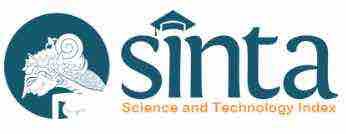SIMULASI DAN ANALISIS INJEKSI PLASTIK BESERTA OPTIMASI BERBASIS SOFTWARE CAE UNTUK PRODUK KOMPONEN KELISTRIKAN
Abstract
The research focuses on the simulation and analysis of injection molding of electrical components that can be carried out by the manufacturing process. The design of the electrical components has been made so it is necessary to follow up on the design for an injection molding simulation. The injection parameters including injection pressure, clamp open time, mold temperature, and melt temperature are fixed, but if the results are less than optimal then changes to the fixed parameters can be made. Changes to the cavity layout and gating system are varied to find out how much influence it has on product results and to find the most optimal results from the simulations that have been done. In the simulation results section, if there is a short-shot defect, the result cannot be taken into account in the simulation results for analysis. The most optimal injection simulation results from inbow electrical terminal components with automatic timer modules made by design molds.
Full Text:
PDFReferences
Aulia, R. (2021). Perancangan dan Pembuatan Prototipe Kotak Mini Circuit Breaker (MCB) Dengan Modul Timer Otomatis dan VA Meter. Menggunakan 3D Print. (Skripsi Sarjana, Universitas Islam Indonesia).
Bayer Corporation. (2000). Bayer Engineering Polymers – Part and Mold Design: Thermoplastics A Design Guide. Pittsburgh: Bayer Material Science.
Danang, R. (2022). Perancangan dan Pembuatan Prototipe Terminal Listrik Eksternal T dengan Modul Timer Otomatis Menggunakan 3D Printer. (Skripsi Sarjana, Universitas Islam Indonesia).
Djunarso. (2011). Dasar Mold Desain. Surakarta: Teknika Media.
Firdaus., & Tjitro, S. (2002). Studi Eksperimental Pengaruh Parameter Proses Pencetakan Bahan Plastik Terhadap Cacat Penyusutan (Shrinkage) pada Benda Cetak Pneumatics Holder. Jurnal Teknik Mesin, 4(2), 75-80.
Iwan, M. (2022). Perancangan dan Pembuatan Prototipe Terminal Listrik Inbow dengan Modul Timer Otomatis Menggunakan 3D Printer. (Skripsi Sarjana, Universitas Islam Indonesia).
Klein, R. (2012). Laser Welding of Plastics. Weinheim:Wiley-VCH.
LANXESS. (2007). Part and Mold Design Guide. Pittsburgh: LANXESS Corporation.
Menges, G., Michaeli, W., & Mohren, P. (2001). How to Make Injection Mold. Munich: Hanser Publications.
Mujiarto, I. (2005). Sifat dan Karakteristik Material Plastik dan Bahan Aditif. Traksi 3(2), 1-9.
Potsch, Gerd., & Michael, Walter. (2007). Injection Molding: An Introduction. Munich: Hanser Pub Inc.
Prasetiyo, A., Fauzun., Azmi, A., Yaqin, R., dan Pranoto, S. (2020). Analisis Keseragaman Pendingin Produk Plastik Injeksi Molding dengan Variasi Sistem Pendingin. Jurnal Penelitian Saintek, 25(2), 173-183.
Surachman, Agus. (2019). Analisis Variasi Layout Runner dan Melt Temperature Terhadap Fill Time dan Cacat Produk pada Proses Injection Molding Sikat Gigi serta Pembuatan Desain Mold Unit. (Skripsi Sarjana, Universitas Islam Indonesia).
Wahyudi, D., & Alimin, R. (1999). Aplikasi Rekayasa Mutu untuk Mengurangi Cacat pada Mesin Injection Molding. Jurnal Teknik Mesin, 134-142.
Zheng, R., Tanner, R. I., & Fan, X.-J. (2011). Injection molding integration of theory and modelling methods. Sydney: Springer Science & Business Media
DOI: https://doi.org/10.31884/jtt.v10i1.505
Refbacks
- There are currently no refbacks.
Copyright (c) 2024 JTT (Jurnal Teknologi Terapan)

This work is licensed under a Creative Commons Attribution-NonCommercial-NoDerivatives 4.0 International License.
 Creative Common Attribution-ShareAlike 4.0 International (CC BY-SA 4.0)
Creative Common Attribution-ShareAlike 4.0 International (CC BY-SA 4.0)













